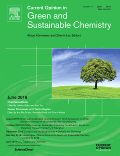
Current Opinion in Green and Sustainable Chemistry
Scope & Guideline
Driving Change Through Sustainable Chemical Insights
Introduction
Aims and Scopes
- Sustainable Synthesis and Processes:
The journal highlights research on sustainable methods for synthesizing chemicals, materials, and fuels, focusing on minimizing environmental impact and resource use. - Biomass and Waste Valorization:
There is a strong emphasis on converting biomass and waste materials into valuable products, exploring new pathways for waste management and resource recovery. - Green Catalysis and Reaction Engineering:
Research on catalysis that enhances the efficiency and sustainability of chemical reactions is a core area, including studies on biocatalysis and innovative catalytic processes. - Circular Economy and Resource Recovery:
The journal promotes research that aligns with circular economy principles, including recycling, reuse, and sustainable production methods. - Environmental Impact Assessment:
Papers often include life cycle assessments and sustainability metrics to evaluate the environmental impacts of chemical processes and products. - Emerging Technologies in Sustainable Chemistry:
The journal covers the integration of cutting-edge technologies, such as machine learning and advanced materials, in driving sustainable practices in chemistry.
Trending and Emerging
- Advanced Biocatalysis:
The journal shows a rising trend in biocatalysis research, focusing on enzyme applications for sustainable chemical synthesis and waste valorization. - Carbon Capture and Utilization (CCU):
There is an increasing emphasis on technologies for capturing and utilizing carbon dioxide, reflecting global efforts to mitigate climate change. - Hydrogen Production and Storage:
Research on green hydrogen production methods, including electrolysis and biogenic approaches, is gaining traction as a key area for sustainable energy. - Circular Economy Innovations:
Topics related to innovations that facilitate circular economy practices, such as waste-to-resource conversion and sustainable product design, are increasingly prominent. - Sustainable Materials Development:
Emerging research on the development of sustainable materials, including bio-based polymers and composites, is trending, driven by the need for eco-friendly alternatives. - Integration of Artificial Intelligence in Chemistry:
The application of AI and machine learning in optimizing chemical processes and sustainable practices is a new and rapidly growing area of interest.
Declining or Waning
- Traditional Chemical Processes:
Research related to conventional chemical synthesis methods is declining as the focus shifts towards greener alternatives and more sustainable practices. - Non-renewable Resource Utilization:
There is a noticeable reduction in papers discussing the use of fossil fuels or non-renewable resources, as the journal increasingly emphasizes renewable feedstocks. - Basic Research on Legacy Pollutants:
Studies that solely address legacy pollutants without a sustainable remediation context are becoming less frequent, as the journal seeks more innovative and forward-looking solutions. - Single-use Plastics and Packaging:
Research focusing solely on single-use plastics is waning, with a shift towards solutions that integrate recycling and sustainable alternatives. - Conventional Waste Treatment Methods:
Papers centered on traditional waste treatment methods are less common as the journal promotes innovative and sustainable approaches to waste management.
Similar Journals

Reactions
Igniting Ideas for a Sustainable Future in ChemistryReactions is a dynamic open-access journal published by MDPI, dedicated to the advancement of research in the fields of Chemical Engineering and Chemistry. Launched in 2020, the journal aims to provide a platform for scientists and researchers to share their findings and innovations, facilitating the synthesis and dissemination of knowledge within the global academic community. With an impact factor that reflects its growing influence, Reactions ranks 47th in the Chemical Engineering category and 72nd in Chemistry on Scopus, placing it within the vibrant landscape of contemporary chemical research. Housed in the picturesque city of Basel, Switzerland, the journal is committed to open access, ensuring that its high-quality content is readily available to all. This commitment not only enhances visibility but also fosters collaboration among researchers, professionals, and students striving to push the boundaries of chemical sciences. As we look towards 2024 and beyond, Reactions continues to encourage submissions that explore groundbreaking methodologies, innovative applications, and transformative theoretical frameworks in chemistry and chemical engineering.
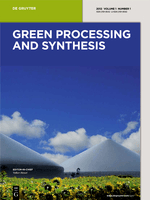
Green Processing and Synthesis
Pioneering Sustainable Practices in Chemical EngineeringGreen Processing and Synthesis, published by DE GRUYTER POLAND SP Z O O, stands as a vital open-access journal in the realms of Chemical Engineering, Environmental Chemistry, Fuel Technology, and more since its inception in 2012. With an impressive impact factor and currently ranked in the Q2 category across multiple domains, this journal plays a key role in disseminating cutting-edge research that addresses global sustainability challenges. The journal emphasizes innovative methodologies and sustainable practices that are crucial for advancing green technologies. Researchers, professionals, and students alike are encouraged to explore its extensive archive and contribute to the evolving conversation around environmentally conscious processing and synthesis techniques, all accessible freely since 2019.

Green Chemical Engineering
Fostering collaboration in sustainable chemical innovation.Green Chemical Engineering, an esteemed journal published by KEAI PUBLISHING LTD, plays a pivotal role in advancing the field of sustainable chemical engineering. With an Open Access policy since 2020, this journal facilitates the free exchange of cutting-edge research and innovations that address critical environmental challenges. Based in China, it has rapidly gained recognition with impressive category quartiles, ranking Q1 in numerous relevant fields including Catalysis, Chemical Engineering (miscellaneous), Filtration and Separation, and Process Chemistry and Technology. Its presence in Scopus highlights its significance, with top rankings (e.g., Rank #4/19 in Filtration and Separation) placing it in the upper echelons of chemical engineering literature. Designed for researchers, professionals, and students alike, Green Chemical Engineering aims to foster a collaborative platform for the dissemination of pioneering work that contributes to a greener and more sustainable future.
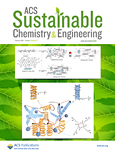
ACS Sustainable Chemistry & Engineering
Transforming chemical engineering for sustainable solutions.ACS Sustainable Chemistry & Engineering is a premier journal published by the American Chemical Society, dedicated to advancing knowledge and innovation in the fields of sustainable chemistry and engineering. With an impressive impact factor and a consistent ranking in the Q1 category across various disciplines such as Chemical Engineering, Chemistry, Environmental Chemistry, and Renewable Energy, this journal serves as a vital resource for researchers, professionals, and students alike. Since its inception in 2013, the journal has been committed to publishing high-quality, peer-reviewed articles that address the critical challenges of sustainability in chemistry and engineering. With no open-access option currently available, the journal emphasizes the importance of premium scholarly communication. As the field continues to evolve, ACS Sustainable Chemistry & Engineering remains at the forefront of providing cutting-edge research that impacts our understanding and application of sustainable practices in the chemical sciences.

Sustainable Chemistry and Pharmacy
Pioneering Research at the Intersection of Chemistry and PharmacySustainable Chemistry and Pharmacy is an esteemed journal published by ELSEVIER, positioned at the intersection of chemistry and pharmacy with a robust focus on sustainability. Operating from the Netherlands, this journal serves as a crucial platform for disseminating innovative research and advanced practices in Pharmaceutical Sciences, Environmental Chemistry, and Pollution Management. With its impressive performance, it is ranked Q1 in Pharmaceutical Science and Pollution and Q2 in both Environmental Chemistry and Management, Monitoring, Policy and Law, with significant rankings in Scopus, reflecting an influential footprint in the academic community. As an Open Access subscription-based journal with a reader-friendly policy, it aims to provide researchers, professionals, and students with access to critical insights and cutting-edge methodologies that could shape future practices and policies in sustainability. Established in 2015 and projected forward to 2024, the journal plays a pivotal role in addressing contemporary environmental challenges while fostering a bridge between chemical sciences and pharmaceutical innovation.
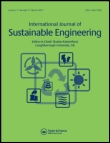
International Journal of Sustainable Engineering
Exploring the intersection of engineering and sustainability.Welcome to the International Journal of Sustainable Engineering, an esteemed publication within the field of engineering, dedicated to advancing the principles of sustainability in design and technology. Published by Taylor & Francis Ltd, this Open Access journal, available since 2022, provides a platform for high-quality research that addresses the challenges of sustainable engineering across diverse sectors. Based in the United Kingdom, the journal enjoys a distinguished reputation, reflected in its impressive Q1 status in the Engineering (miscellaneous) category and a notable Scopus rank of #35 out of 307, placing it in the top 88th percentile of its field. With a timeline of publications from 2008 to 2024, the International Journal of Sustainable Engineering serves as a vital resource for researchers, professionals, and students seeking to engage with innovative solutions that promote sustainability in engineering practices. We invite you to contribute to this critical discourse and explore the wealth of knowledge presented in our journal.
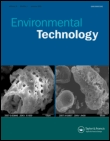
ENVIRONMENTAL TECHNOLOGY
Exploring the Frontiers of Environmental Science and TechnologyENVIRONMENTAL TECHNOLOGY, published by Taylor & Francis Ltd, is a prominent journal that serves as a crucial platform for disseminating pioneering research in the multifaceted fields of Environmental Science, Water Science and Technology, and Waste Management. With an impressive record spanning over three decades from 1990 to 2024, the journal holds significant rankings in various categories, including Q3 in Environmental Chemistry and Q2 in both Medicine (miscellaneous) and Water Science and Technology for 2023. Its Scopus rankings further position it within the top tiers of Environmental Science disciplines, reflecting its influence and relevance, particularly as it pertains to pressing global environmental challenges. While the journal does not offer an open access option, it remains dedicated to advancing knowledge and promoting innovative solutions among researchers, professionals, and students engaged in environmental studies. As it continues to attract high-quality submissions, ENVIRONMENTAL TECHNOLOGY plays a vital role in shaping future research and practices aimed at sustainable environmental management.

Environmental Chemistry Letters
Transforming research into actionable insights.Environmental Chemistry Letters, published by Springer Heidelberg, stands at the forefront of interdisciplinary research within the field of Environmental Chemistry. Since its inception in 2003, this esteemed journal has provided a dynamic platform for the dissemination of innovative studies and groundbreaking findings, contributing significantly to the understanding of chemical processes affecting the environment. With an impressive impact factor and ranking third out of 147 journals in Environmental Chemistry (98th percentile as per Scopus), it consistently attracts high-quality submissions from researchers around the globe. The journal maintains a Q1 category rank as of 2023, underscoring its prominent position in scholarly discourse. Environmental Chemistry Letters is dedicated to advancing knowledge on contemporary environmental issues, fostering solutions to mitigate chemical pollution, and promoting sustainable practices across various sectors. Researchers, professionals, and students alike will find invaluable resources within its pages as it continues to illuminate the path toward environmental sustainability.

Green Chemistry Letters and Reviews
Fostering a cleaner tomorrow through innovative research.Green Chemistry Letters and Reviews is a premier Open Access journal published by TAYLOR & FRANCIS LTD, dedicated to advancing the field of green chemistry through the dissemination of high-quality research and innovative reviews. With a focus on sustainable practices and environmental impacts, this journal positions itself at the nexus of chemistry and environmental science, achieving impressive rankings in both categories—Q1 in Chemistry (miscellaneous) and Q1 in Environmental Chemistry as of 2023. This esteemed publication, based in the United Kingdom, not only promotes critical research but also encourages accessibility, having been an Open Access platform since 2012. With a robust H-Index reflecting its academic influence, Green Chemistry Letters and Reviews serves as an essential resource for researchers, professionals, and students seeking to engage with cutting-edge developments in green chemistry from 2007 onwards, continuing its impactful journey into 2024 and beyond.
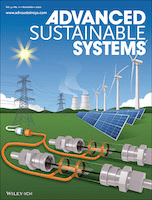
Advanced Sustainable Systems
Championing Tomorrow’s Sustainability TodayAdvanced Sustainable Systems is a premier academic journal published by WILEY-V C H VERLAG GMBH, dedicated to the dynamic fields of environmental science and renewable energy. With an ISSN of 2366-7486, this journal has rapidly established its significance within the scientific community, achieving a prestigious Q1 ranking in both Environmental Science (miscellaneous) and Renewable Energy, Sustainability and the Environment categories as of 2023. Spanning the converged years from 2017 to 2024, it serves as a vital platform for researchers and practitioners alike, facilitating the dissemination of innovative ideas and groundbreaking research that drive sustainability initiatives globally. Although not an Open Access publication, its contributions are invaluable, reflected by its commendable Scopus rankings—#28 out of 233 in General Environmental Science and #49 out of 270 in Renewable Energy. As we face pressing environmental challenges, Advanced Sustainable Systems remains at the forefront, championing research that informs and influences sustainable practices and policies across the globe.